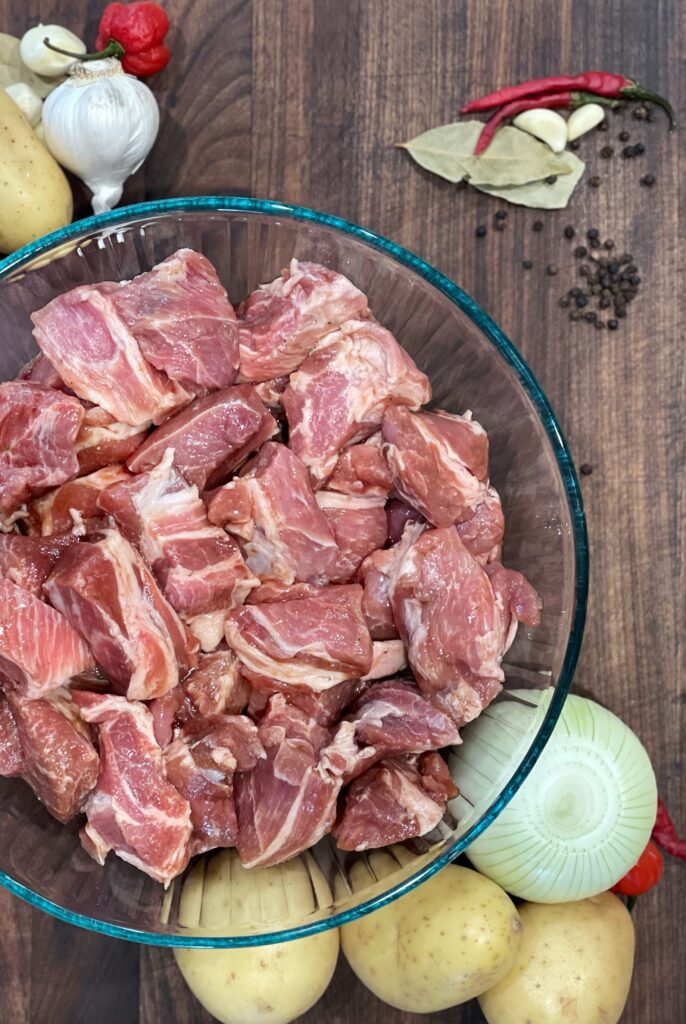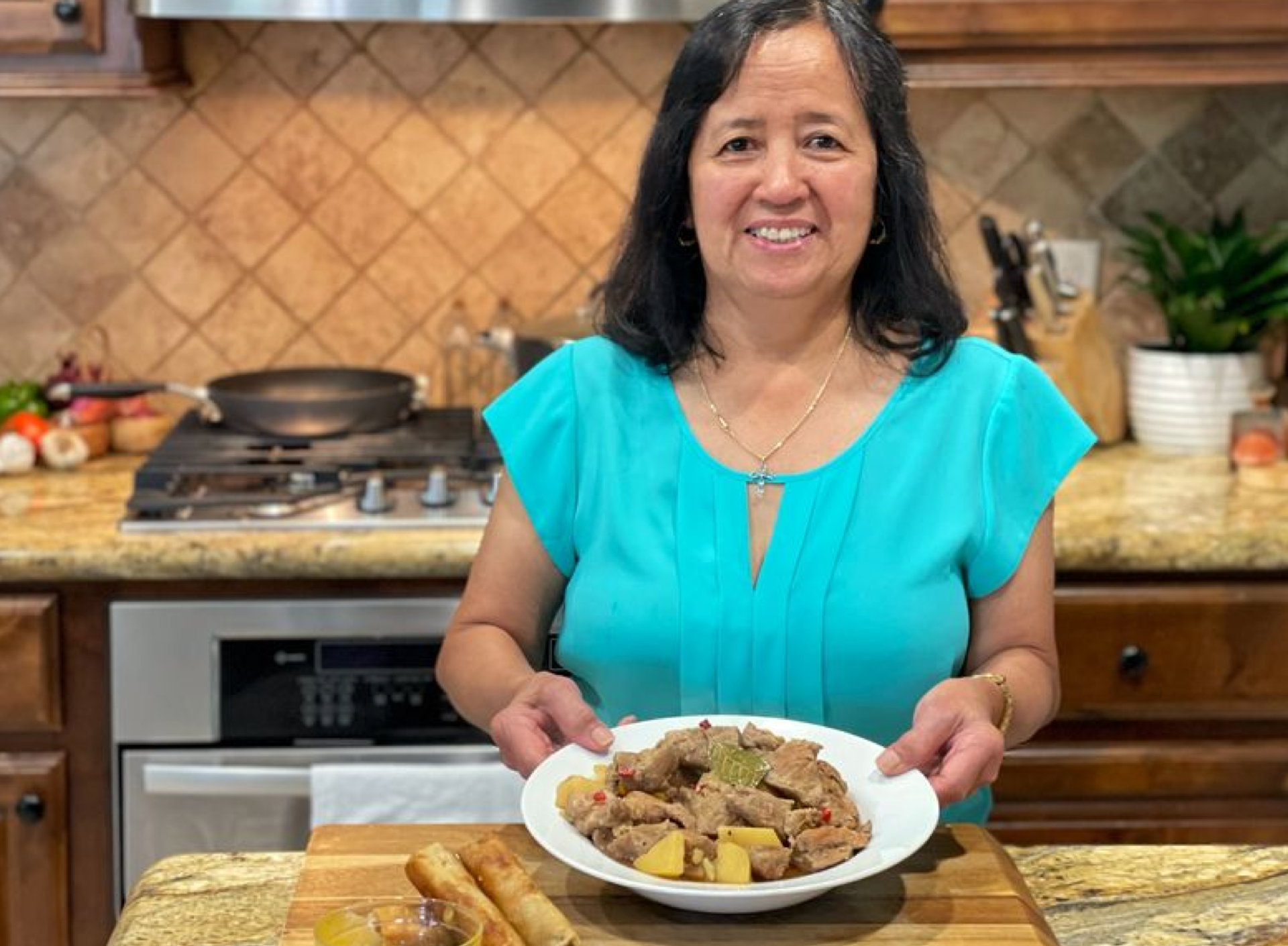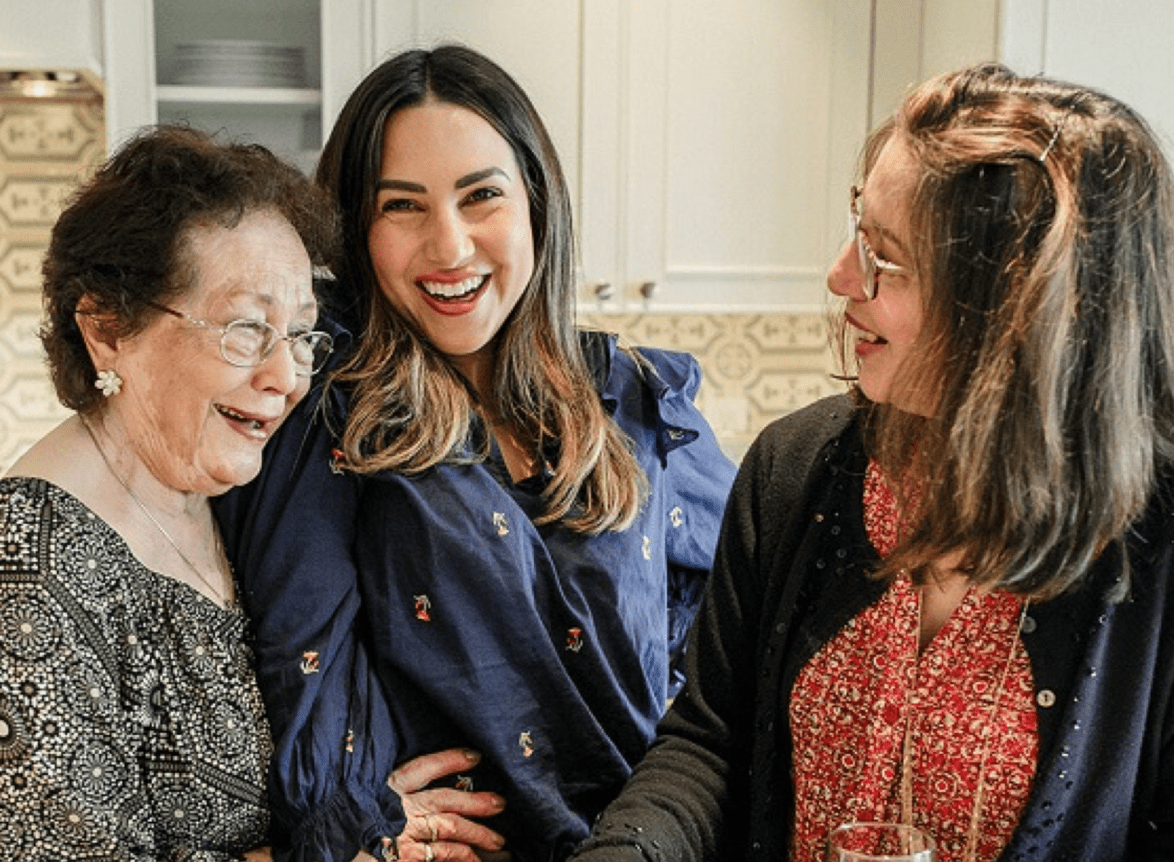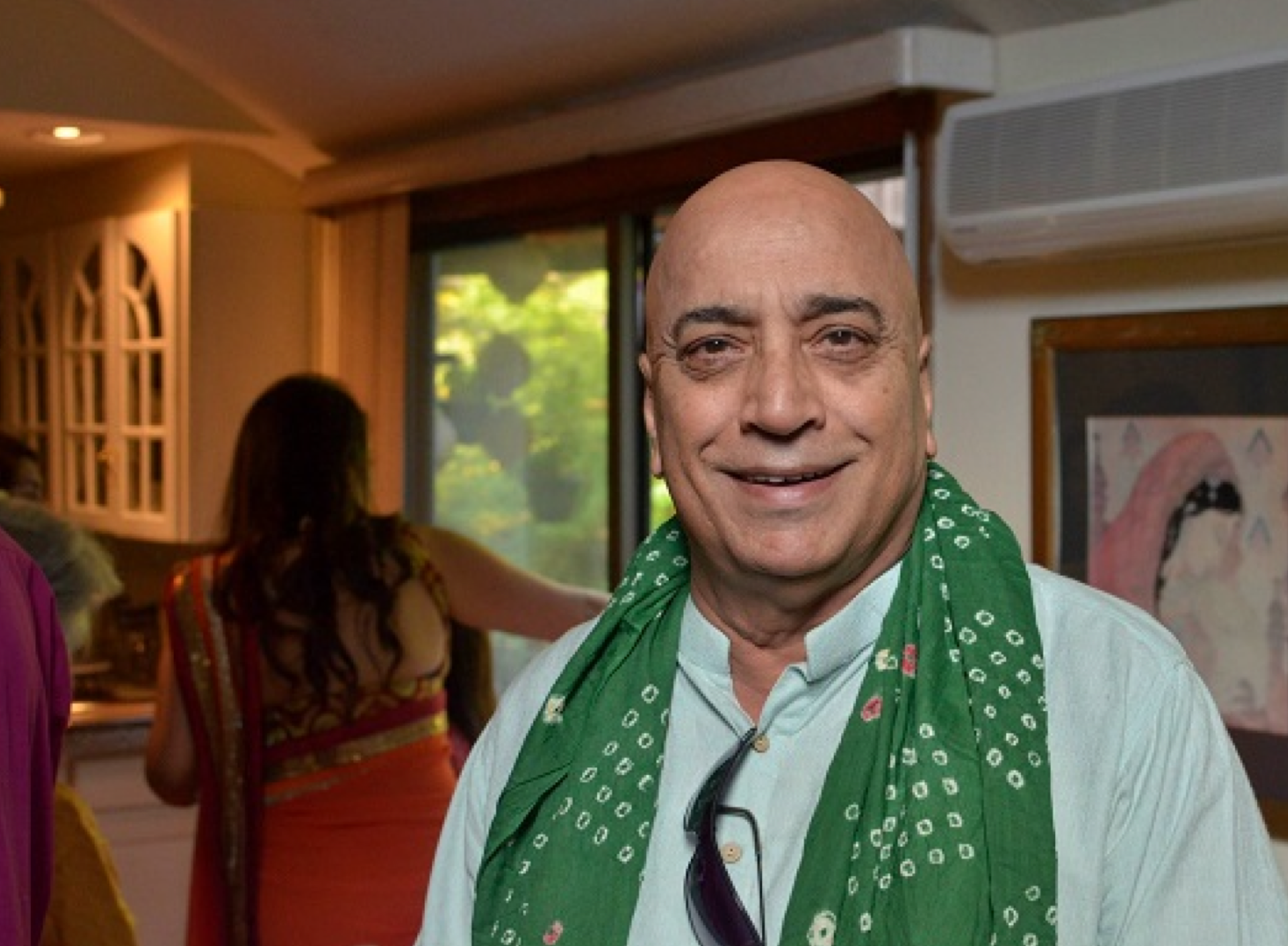By: Amber Robertson, Featuring: Julie Hopkins
Julie Hopkins isn’t a stranger to large families. As one of eight children, she was accustomed to always being surrounded by her siblings. She shared a room with her four sisters, the boys in a separate room. They went to school together, studied together and played together. She rarely got a moment to herself, but she enjoyed it.
Getting started
In the Philippines, family is an important part of the culture. It’s not uncommon for one to see large families, with multiple generations living together under one roof or within a section of land. Elders are treated with the utmost respect and are even approached by younger generations to be blessed. The people of the Philippines – Filipinos – believe in a united harmony and genuinely appreciate being together with others, a term known as Pakikisama.
Tending to a large household requires a lot of work and for Julie’s family, every one was expected to contribute through chores. Cooking was one chore that Julie didn’t mind. She loved to eat and enjoyed the concept of taking ingredients and melding them with spices to create savory, mouth-watering dishes or sweet and tasty bites.
Julie learned how to cook from her parents, mainly from her mother who sometimes would enlist extra help from her Aunt Annie. Other times, it was with her father helping in the kitchen. “At first I would just watch them until my mom started letting me help prepare ingredients by washing or chopping,” says Julie. “It wasn’t until high school that I really wanted to learn to cook.”
The first dish she attempted was rice, a staple ingredient in the Philippines, and one that is typically served at breakfast, lunch and dinner. In the mornings, you would see rice paired with eggs and either fried fish or sausage. For lunch, you might serve it as an accompaniment to a bowl of soup. For dinner, you’d see meat or fish served atop regula rice or fried rice.
“It was an easy recipe,” laughs Julie. “But, we didn’t use measuring cups. You pour in how much rice you want, you rinse it a few times, and then you fill the pot with water while using your fingers to measure the liquid you need.”
Her favorite childhood dishes were fried milkfish, which she learned side-by-side in the kitchen as her mother explained each step, and another recipe Filipinos are well known for – Adobo – a dish using chicken or pork that simmers away in a broth of soy, vinegar, garlic, bay leaves and black peppercorns.
“My dad did not cook as often as my mom, but he did show me how to make his Adobo,” recalls Julie. “He taught me how to cut the meat, how to season it and when to add the veggies – we added potatoes and sometimes carrots for color – although that is not traditional. It’s a memory I remember and a recipe I still make.”
Julie’s parents were fortunate to have their own land, where the family raised animals and grew their own produce and rice. Most of the harvested food was used for their family meals, but Julie’s family would often share extra produce with others. “Neighbors would come and ask to buy produce, but my mom and dad did not sell it at the market,” says Julie. “Sometimes, they would just give it away. It was who they were. It was part of supporting our local community.”
Celebrations were also a community affair. Special occasions and birthdays typically included all the family, friends and the neighbors. Gatherings would often see 15, 20 or more people, including kids. Food was served buffet style where guests could choose between multiple noodle dishes, regular or fried rice, meat and fish entrees, breads, fruit salads and beverages. It was always a casual, “sit where you can” type of vibe typically filled with lots of laughter.

Adjusting to a new life
In college, Julie met an American man who had been stationed at the air force base on the island. Within two years, they fell in love, married and had a daughter. Soon after, her husband’s deployment would come to an end and they decided that they would move back to Texas where his family currently lived.
Wayne, her significant other, came from a large family himself, although it was not as big as Julie’s. She essentially would be trading one large family for another, but the only caveat was she had never met this new family and did not know anything about them. She particularly remembers her first time meeting his famil, but not necessarily for the reason you would think. She was impressed with where the family took them and the food that was served.
“We ended up going to this restaurant with his family, but I had never seen a restaurant like this before,” says Julie. “I went in and there was all this food and you went through a line and I could pick whatever I wanted – mixed veggies, different meat dishes, bowls of desserts. It was exciting because I had never experienced it.”
Julie laughs about it now, admitting she really liked the place and that they would end up going back multiple times over the years. The restaurant? Well, it was a popular, Texas cafeteria-style establishment named Luby’s.
Life was definitely different in Texas. During the first two years, they lived with Wayne’s parents and his youngest siblings while he finished college and Julie stayed home with their daughter. Family meals were also very different. Julie was used to some american food, having been introduced to the likes of McDonalds and Kentucky Fried Chicken from the air force base back in the Philippines, but it wasn’t an everyday meal for her. With Wayne’s family, she found herself eating a mix of american dishes such as meatloaf and spaghetti and some more traditional southern recipes.
“Wayne taught me how to cook pinto beans with ham hocks, cornbread and spinach,” recalls Julie. “We didn’t have this type of big-leaf spinach in the Philippines, but the texture and taste reminded me of vegetables we did have called kangkong or malunggay.”
Although she thought American food was good, Julie found herself missing her traditional dishes. Then one day, Wayne’s family asked her if she could cook them Filipino food and she eagerly agreed. Most of the ingredients she needed weren’t readily in the house so she had Wayne’s sisters take her to a local grocery store. She was able to get ingredients like soy sauce and rice, but had to use other items for ingredients that weren’t available.
“I cooked them chicken adobo and rice, and tried to make them pancit,” says Julie. “I had to ask them for some ingredients, like bay leaf, and for the pancit I had to use spaghetti noodles.”
She made it work. She also shared that his family loved the dishes and ended up being big fans of the chicken adobo served with rice, oftentimes asking her to make it again over the years.

Building community over food
Julie, her husband and her daughter, would eventually move into their own place, but lived close to Wayne’s parents and siblings and would get together with them often. She took over cooking for their small household, but at times, she would cook together with her husband who wasn’t as well versed in the kitchen. She would try to teach him to cook, but jokingly shared that he was too messy and would often tell him to go sit down.
Starting out, she cooked more Filipino food because it was what she was used to cooking; it was easy for her. However, she was interested in learning to cook other dishes and admittingly shared even the easier recipes like hamburgers intimidated her. It wasn’t until her husband, an avid book reader, took them to the local bookstore that Julie discovered a variety of cuisines from around the world. Her husband would buy himself a book, their daughter a book, and would ask Julie if she wanted something. She always picked the books filled with images of food and detailed instructions.
Cookbooks are how Julie learned to broaden her skills in the kitchen. “When I started reading these books, I learned more about seasoning and sauces,” says Julie. “I had never heard of Oyster sauce and had never used it until I came across this recipe. I was also introduced to new vegetables and different ways to prepare a variety of meats.”
During this time, Julie had started working at the local Safeway grocery store and would eventually work her way up to manager. While at work, she met a variety of people, always striking up conversations. It is also where she met most of the Filipino friends that would later become her community, the “family” that would help bring a bit of the Philippines to Texas, something she missed dearly.
“Filipinos like to get together, to be together,” shares Julie. “We would take turns hosting, but it would be a potluck and everyone would come over. Sometimes we play mahjong, but most of the time we talk, catch up and just like to be around each other.”
Whether it was potlucks with friends or celebrating special occasions at home, Julie loved to share her food with others. She would take what she learned and add in her own flair – using a recipe she had read, but adjusting it to her liking. She also had to adjust based on what ingredients were readily available to her. When making Monggo Beans, or Mung Beans, she learned to substitute the malunggay with spinach. She used ground beef instead of ground pork in her lumpia, and when making BBQ, she would throw in a splash of soy and other secret ingredients into her sauce.
“You don’t have to follow a recipe exactly,” says Julie. “It doesn’t mean it’s perfect and it doesn’t have to be perfect. It’s whatever you want to put together that makes it part of your own.”
Regardless of whether she is entertaining a group of 5 or 25, Julie often makes an excess amount of food so that people can always walk away with leftovers. Some could say it’s something she picked up from her parents or maybe it’s just the Filipino way, but it’s become part of who Julie is.
When people ask her for her recipes, she gladly shares them. Although she may accidentally omit an ingredient, something she says happens because they are “all in my head.” It wasn’t until these last ten years that she has had to recall most of her recipes – a request that has come directly from her daughter, who is now a married adult.
Cooking different cuisines makes Julie happy, but she shares that her traditional Filipino recipes are the most important to her because “it’s how I grew up and it’s what I inherited from my parents.”
Julie is still working with her daughter to recreate and document her favorite family recipes, and is toying with the idea of opening up a restaurant, at her daughter’s insistence. Through this process, Julie has come to recognize and appreciate the importance of sharing family recipes.
“It’s important to share your recipes so that others can learn and understand your culture, see how things are passed down,” says Julie. “It’s also a remembrance, so that people don’t forget…Like my parents and how I got my recipes from them; it’s a remembrance from them when they are gone.”
Ready to make your printable family recipe book? Shop now
Have more questions? Visit our FAQ section here. Alternatively, you can email us at hello@heirloomproject.co
To get regular updates, follow us on Instagram here







Leave a comment
Your email address will not be published. Required fields are marked *